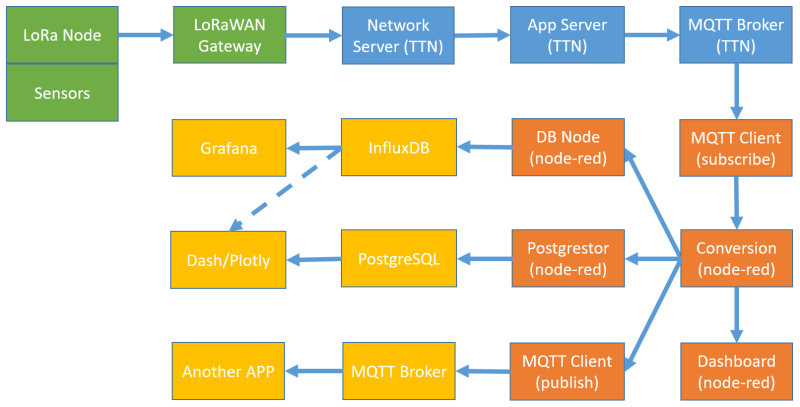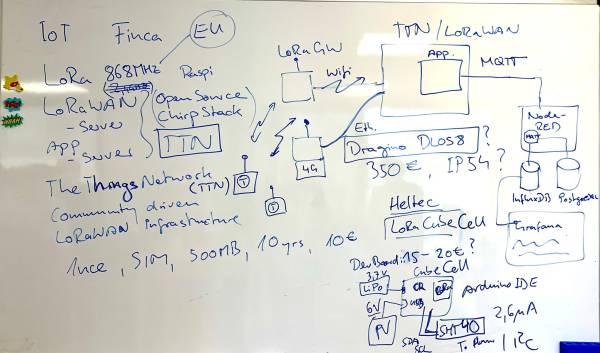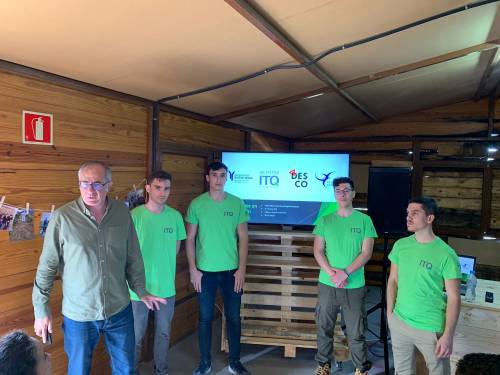IoT Finca El Viso, Telde, Gran Canaria
Project Idea: LoRa based sensor network.
IoT Finca is an interdisciplinary project developing hardware and software for embedded sensor systems using LoRaWAN for wireless data transmission.
Four students from the Formacion Profesional IES Rincon are developing a LoRaWAN based wireless sensor network (WSN) as part of an internship with the company Dr. Stetter ITQ in Las Palmas. The project is supported by the German Rhine-Waal University of Applied Sciences.
The LoRaWAN technology is a major IoT technology for long ranging lower power wireless sensors. The WSN will be deployed at the Finca El Viso to monitor environmental conditions such as temperature, humidity, soil moisture, etc.
The Finca “El Viso” is a demonstration center for circular economy. The Fundacion MAPFRE guanarteme is one of the funding authorities.
About the Finca El Viso
The Finca El Viso is an Agroecological Social Entrepreneurship Incubator. The Cabildo Insular, the City Council of Telde, Fundación MAPFRE Guanarteme and the Association for the Development of Social and Community Economy (ADESCO) join forces to support this initiative, which serves as an incubator for social entrepreneurship projects in the primary sector aimed at raising awareness of organic farming, environmental sustainability, circular economy and the generation of employment opportunities for the most needy segments of the population through the ecological exploitation of agricultural areas.
El Viso is the perfect place to demonstrate state of the art IoT technologies supporting organic farming.
| Video: About the Finca El Viso |
IOTLAND
| Video: The IOTLAND project. |
Implementation Details
Distributed System Architecture
The LoRa nodes equipped with environmental sensors send their data wirelessly via the LoRaWAN protocol to a gateway which forwards the data to a stack of different LoRaWAN servers provided by the TTN (The Things Network) community based LoRaWAN infrastructure. The data collected in a specific application on the server can be requested from an integrated MQTT broker. The MQTT protocol implements a publisher-subscriber software design pattern. The sensor data is published under a certain topic, a kind of name of a data end point. Clients, i.e. own software systems, can subscribe to the topics. Whenever a sensor updates its measurement data under a specific topic, a message containing the data will be sent to all subscribers.
The project uses Node-RED as one main system subscribing to the sensor data topics provided by the TTN MQTT broker. Node-RED is ideal to branch the message stream, to convert the data and to redistribute it further, e.g. to different databases, dashboards or other applications. The transformed messages can even be republished again enabling other systems to subscribe to it.
Node-RED, InfluxDB, Grafana (NIG)
- Node-RED: https://nodered.org/
Hardware
- Dragino DLOS8 LoRaWAN Gateway with 4G
- Heltec CubeCell LoRaWAN enabled microcontroller dev. board
- SHT40 Sensirion Temperature/Humidity sensor (I2C):
- LiPo Cell, 500 - 1000mAh: Connector must match the CubeCell
Suppliers
Technical Reports
Project Planning Tools
Activity: Creation of a Digital Geographic Map of the Finca
Open geodata can be used to support the project. We want to create maps showing the Finca, its buildings, land parels, landuse and finally the location of sensors and gateways.
A collection of geodata links as well as photos can be found here.
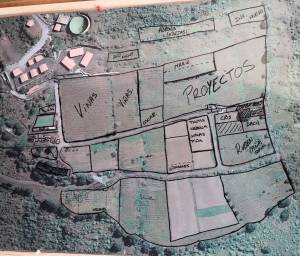 | 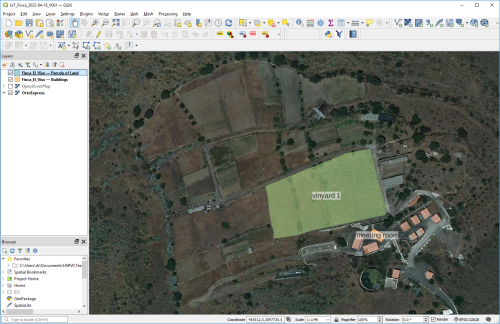 |
| Fig.: Hand-drawn land parcel map of Finca El Viso. | Fig.: Digitizing the Finca map, first two polygons created in QGIS (V001). |
The geodata related software is provided in this git repository.
First Generation Student Development Team
Developer Meetings / Tasks


